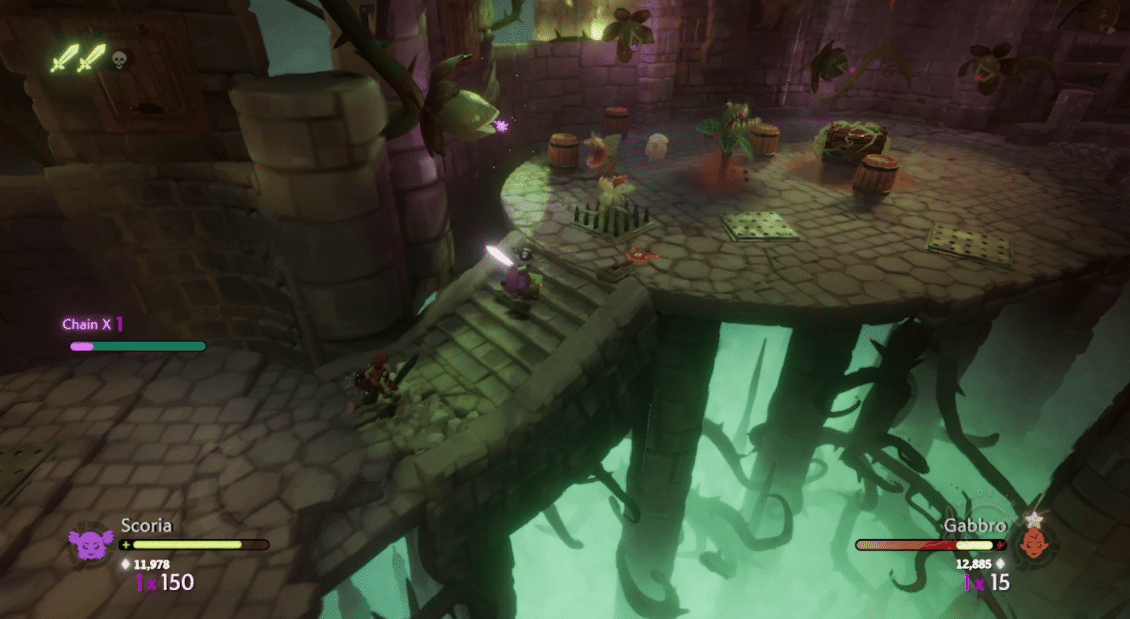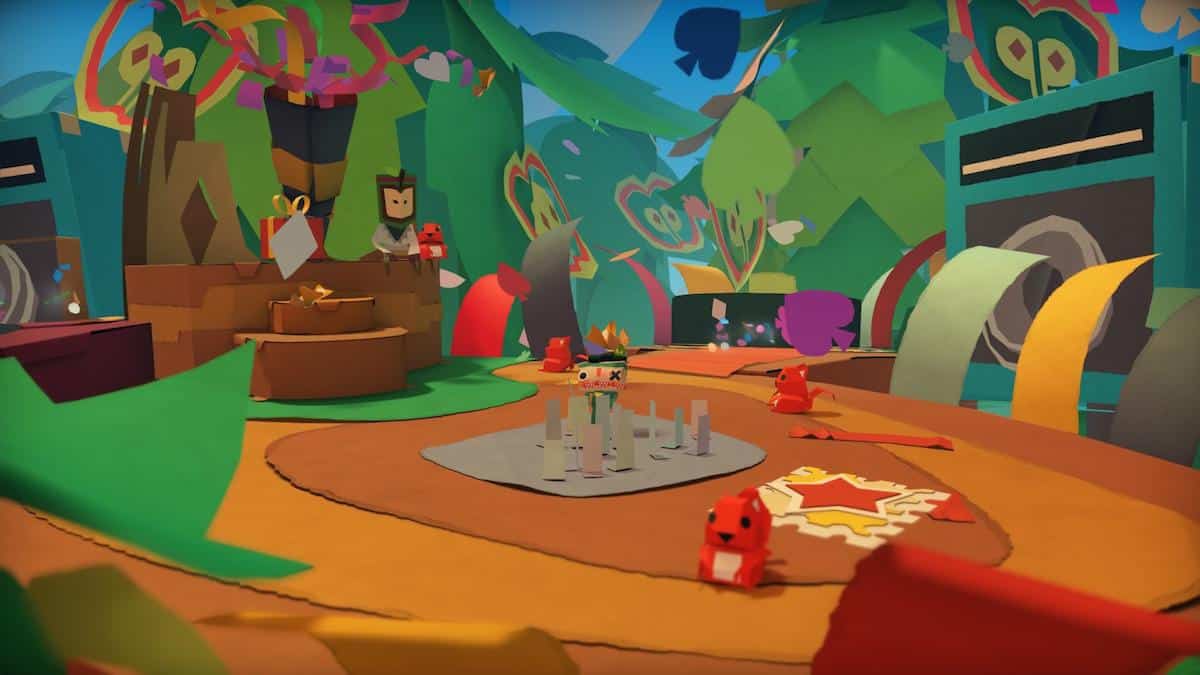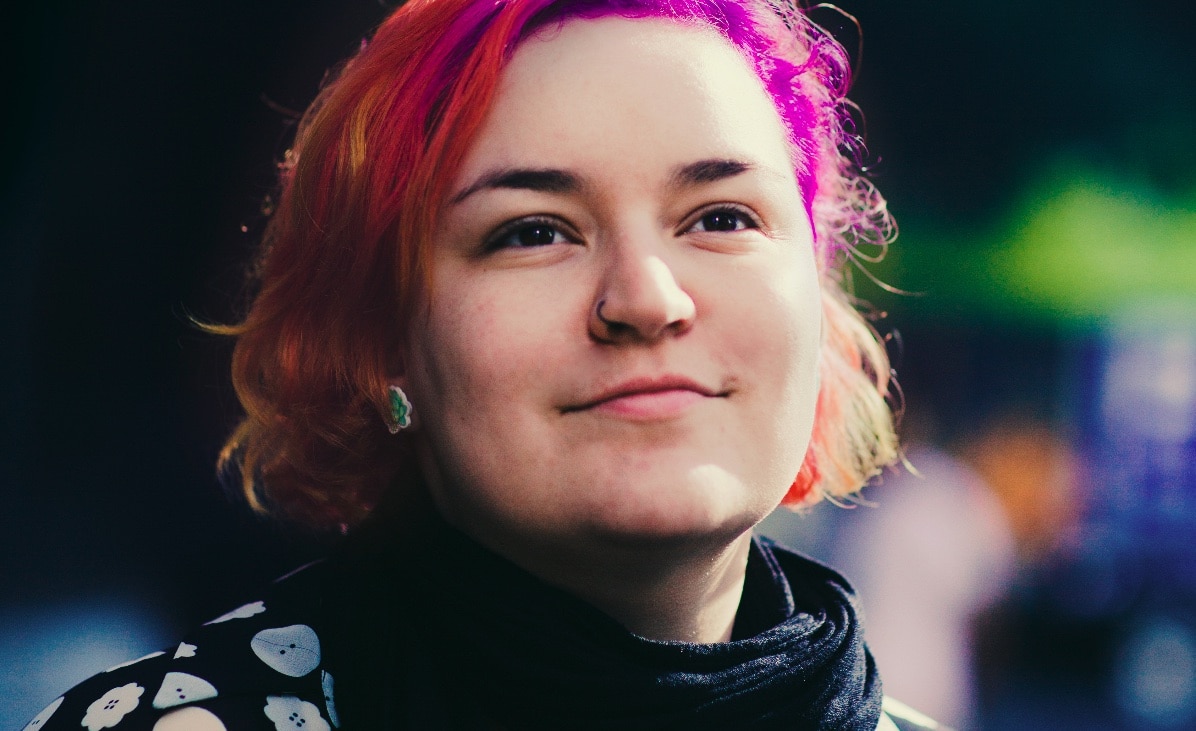Multiple barriers stand in the way of women joining the games industry, in Australia and overseas. An industry with a history of sexism, and one that has historically been dominated by men, can be extremely intimidating for aspiring young developers. Despite these challenges, there are many women in Australia who’ve broken barriers within the industry, and helped to carve it into a more welcoming space.
While women make up just 30 per cent of game developers as of 2021, their impact on the global games development scene, and Australia’s local scene, is phenomenal.
ACMI-led exhibit Code Breakers: Women in Games, which is currently touring the Yarra Ranges in Victoria, aims to recognise this contribution by celebrating the work of women in games, and giving hope to the next generation who hope to join the industry.
Read: ACMI Women in Games exhibit lands in Lilydale
Featured in this exhibit is work from a number of woman game developers, including Media Molecule’s Siobhan Reddy, known for her work on Dreams, Lisy Kane, known for her time at League of Geeks and her work on Armello, Katherine Neil, the independent game developer behind Escape from Woomera and the founder of Media Interactive, and Cherie Davidson, who worked at Media Molecule, and helped to ship titles like Tearaway Unfolded and Wander MMO.
Recognising the contributions of these women is an essential step in acknowledging the change that the global games industry has undergone over the last few decades. What was previously considered a ‘boy’s club’ is slowly evolving to become a more diverse, welcoming space for everyone.

Change hasn’t come easily, and women are still fighting for justice around the world, but the creation of the exhibit and its touring popularity is a testament to the value of women’s contributions, and exactly how they’ve changed the industry.
To understand more about women’s experiences in games development, and why the exhibit is so important, we spoke to tenured developer Cherie Davidson (who has worked on titles like Untitled Goose Game, Intergalactic Space Princess, Necrobarista and more) about her journey through the Australian industry, and what still needs to change.
This interview has been lightly edited for clarity and cohesion.
GamesHub: How has the games industry changed over the last decade you’ve been working?
Cherie Davidson: It was around 2011, 2012 when I finished my first degree. That was right when the global financial crisis had repercussions in the games industry in Australia. There were a lot of companies that were driven by international publishers, international stakeholders … A lot of companies shut down or had mass layoffs. So I was entering the industry in a time when things were actually a little bit grim.
But incredibly, that became … fertile grounds for what has now become some of the most exciting studios around – Mighty Kingdom, League of Geeks, Mighty Games, Tin Man Games – a lot of studios emerged from these layoffs. Now, I feel like we’re living in this garden. We have this incredible variety of games and studios that have all grown from this. There’s a new era of game studios, in the last five years, that [have been created] because of government support, and because of the skills and expertise that’s now around. They’re able to create much more interesting and diverse games that reach different audiences that we couldn’t reach before. I think it’s so exciting right now.
What was it like coming up as a women in an industry that is so largely dominated by men?
Davidson: The stereotype we often see in media or on TV, about software and games being super male dominated – and these really ‘bro-y’ type cultures – hasn’t actually really been my experience. I’m not sure if I’ve been fortunate, or if it’s reflective of most women developers’ experiences, but particularly where I’ve worked there’s been really good vibes, lots of support for diverse developers and lots of room for us to try and get in there.
That said, there have certainly been times where I’ve struggled to have my voice heard. But this has been balanced by incredible support networks, for women and non-binary people, and other marginalised genders, where we really have each other’s backs the whole time.
I think there’s huge value in working in games – I love everything I do. I’m very excited for exhibits like Code Breakers because it shows the general public, and particularly young girls and young girls, that this is a space that is for everyone.

What do you hope people get out Code Breakers, and seeing the impact women have made on the games industry?
There’s a huge variety of women in Code Breakers – I had the pleasure of working with Siobhan [Reddy] really early in my career. Her pathway is really different to mine, which is different to Lisy Kane. We all have different journeys and I think it’s very easy to look at it through the ‘woman’s lens’ and be like, ‘well, this is a woman’s exhibition’, but it’s also an exhibition of people.
Whether it’s girls who come in and see women adult role models in there, and they’re inspired by that. Whether it’s just some person who can see women a bit like them, and they’re like ‘yeah, this is a journey that I can relate to’ and break that stigma and stereotypes, and realise games are not just people sitting in little dark corners and basements programming with hoodies on – that’s not what games are at all.
What role models did you have as you progressed in your career?
There’s so many people I want to include. Early career, Siobhan Reddy, Michelle Ducker and Luci Black were the women I worked with in Media Molecule, and they were really inspirational. Because I was with them day-to-day, they were there impacting me, and they’re just incredible people. I could see forward in time – because they were older than me, I could see how I could have a lifelong career in games. [I could] see who I could be in 10 or 20 years from now.
Then, of course, there’s people in the industry who are ‘on the horizon’, people like Brenda Romero [prolific game designer] – she’s always inspired me, and Helen Stuckey, who’s a games historian – she’s incredible. I also want to mention – just because it’s very funny – there’s a Chrome extension called Ferengizer … which swapped out the word ‘female’ with this weird Star Trek font – this was back at the time of GamerGate [the extension was created by developer games advocate Zoe Quinn] – it just really pointed out how many people online would be like ‘females do this’ or ‘females do that’. I don’t know why, but that’s always stuck to me as a really inspirational thing.
And just generally, any women or non-binary person, or underrepresented gender who has had to try and get themselves heard in a room full of men – it’s a challenge, and when you see it happen – [you should give] props.
What do you hope you represent for the next generation of women?
The idea that a girl who lived down street from me [Davidson previously lived in Lilydale, where Code Breakers is currently established], or someone who lived up the road, or one of my friend’s kids could come and see that and be like ‘oh, this isn’t a boy’s club, there’s space here in this industry for me’ – that’s it. I just want people to feel like there could be space from them in there. That they can explore all the kinds of things they want to explore.
[I wanted them to know] they don’t have to make shooters, they don’t have to make platformers, they can make games about love, or about trust, or family, or friendship. It could be anything. I hope, not just for my representation, but the exhibition and all the work that’s been done to get underrepresented voices in games heard can … also reach the men, reach the boys – they have to understand this is a space that isn’t just ‘for them’.

Why is having diverse views and underrepresented voices behind the scenes so important to actually creating games?
I mean, it’s the chicken and the egg problem, right? If we don’t have underrepresented voices making games, we’re not going to make voices that represent people, and then those people won’t be making games. It’s like any media that is formed for public consumption – we need to have a diverse range of people carrying that content so that they’re shaping the way the rest of the world is understanding and viewing and consuming that content.
On a personal note – I really enjoy games that are a bit different – like Olivia Haines‘s highly feminine games. They’re delightful in a way that you don’t see in most mainstream games. If we bring those voices in, if we not just encourage young girls to engage with game development early on, but also keep women and non-binary people and other underrepresented developers, in games, then we’ll create games that are better and more accessible. Who wouldn’t want that?
What do you think the industry can do to better support women and long-term careers in the games industry?
A lot of it, at this point in time, is about making safe workplaces. Workplaces that don’t take people away from their families [for example]. We see that happening in companies like Mighty Kingdom, where they have a four day work week, and a bunch of other benefits for their teams. [You also need] really clear pathways from Junior and Graduate roles, all the way up into Leadership and Director and Senior roles.
Read: Mighty Kingdom has a vision for a better Australian games industry
Having larger companies that can support having a really consistent pathway, and a clear pathway that is without bias is really key. Once [women, non-binary people and underrepresented genders] are in [those positions], then they can start to enact the change that they needed when they were early in their careers.
I think we’re going to see really interesting stuff in the next decade.
What are the biggest lessons you’ve learned in forging your own path in the Australian games industry?
I’ve always taken opportunities as they come up. For the first part of my career, that was really good. For the second part of my career, that was a habit I had to unlearn. There’s a point where so many interesting [things] happen, and you have to follow your heart for the things that interest you. When you first start doing it, you’re not doing it for the money – there’s not a lot happening there when you’re early on.
Follow your heart, follow the opportunities, do what you love. You’re doing it somewhat out of passion. On the flip side, especially as you gain more experience, find boundaries. Work out what is important to you in your life. If you just do that one thing – if you only make games, if you only paint, if you only do one specific thing – you’re not drawing inspiration from the rest of the world, from other human experiences.
So, be human. Go and live life, and bring that into your art form, and bring that into your work.
Code Breakers: Women in Games is currently exhibiting in the Yarra Ranges Regional Museum in Lilydale, Victoria, and will be available for free viewing (and plenty of inspiration) until Sunday, 15 May 2022. To find out more about the show, head to the ACMI website.





